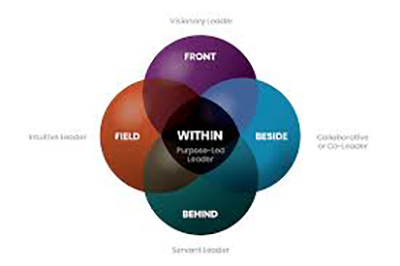Dimensional Leadership Styles: One-Dimensional, Two-Dimensional, and Three-Dimensional Models
Dimensional leadership styles categorize leadership behavior based on specific dimensions, offering structured models for understanding how leaders influence their teams. These styles reflect varying levels of task orientation, relationship focus, and adaptability, and help leaders analyze and refine their approach based on situational and employee needs.
One-Dimensional Leadership Style
The one-dimensional leadership model focuses solely on the degree of decision-making freedom—either by the manager or the team. Leadership behaviors are placed along a continuum ranging from authoritarian (leader decides everything) to delegative (team decides everything).
Key characteristics:
-
Only one variable is assessed: control over decision-making
-
Leadership styles appear as extremes on a linear spectrum
-
Common models: Tannenbaum and Schmidt’s Continuum of Leadership Behavior
Two-Dimensional Leadership Style
The two-dimensional leadership model introduces two behavioral axes:
-
Task-oriented behavior (horizontal axis)
-
People-oriented behavior (vertical axis)
These axes intersect to form a managerial grid (also known as the Blake and Mouton Managerial Grid), which classifies leadership styles based on their emphasis on performance vs. relationship-building.
Quadrants include:
-
Impoverished Management (low task/low people)
-
Country Club Management (low task/high people)
-
Task Management (high task/low people)
-
Middle-of-the-Road Management (moderate on both)
-
Team Management (high task/high people)
This model emphasizes balanced leadership as ideal for effectiveness.
Three-Dimensional Leadership Style
The three-dimensional leadership model adds a third variable: effectiveness or contextual fit. Two notable versions include:
Reddin’s 3D Model
Adds leadership effectiveness as a third axis to the managerial grid. It recognizes that the same style can be effective or ineffective depending on the situation.
Hersey-Blanchard’s Situational Leadership Model
Considers the maturity or development level of employees as the third dimension. It recommends adjusting leadership behavior as follows:
-
Low maturity → High task, low relationship (directive)
-
Moderate maturity → High task, high relationship (coaching)
-
High maturity → Low task, high relationship (supporting)
-
Very high maturity → Low task, low relationship (delegating)
This model encourages adaptive leadership, tailoring style based on employee readiness.
Summary
Dimensional leadership styles provide powerful frameworks to analyze and adjust leadership behaviors based on decision authority, people/task orientation, and situational effectiveness. They support flexible, evidence-based leadership in modern organizations.
« Back to Glossary Index





![15 Employee Offboarding Templates That Save Hours of HR Time [Free Downloads] 15 Employee Offboarding Templates That Save Hours of HR Time [Free Downloads]](https://i1.wp.com/www.hrcloud.com/hubfs/Header.png?w=150&resize=150,100&ssl=1)
